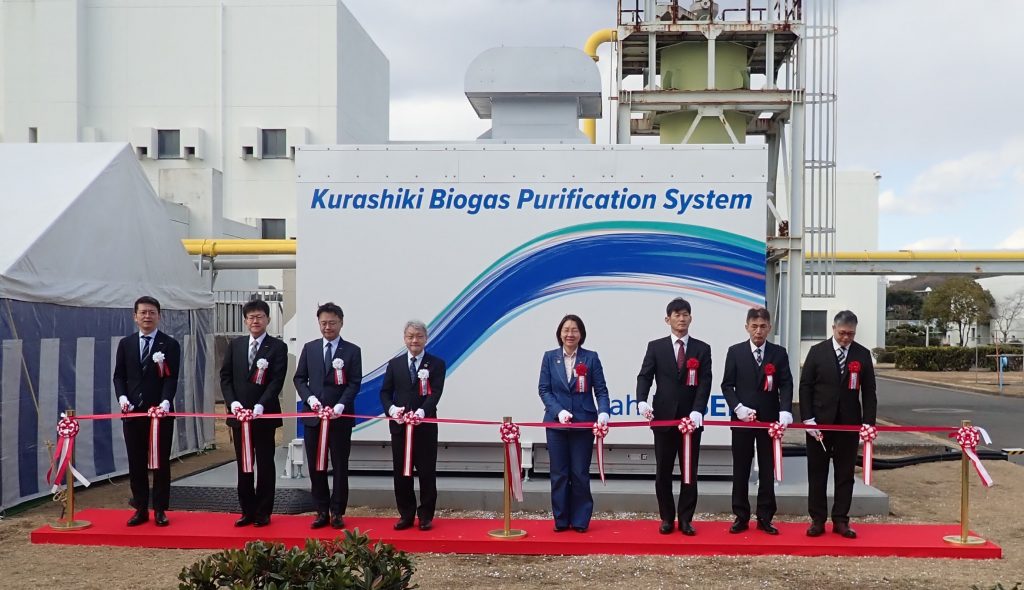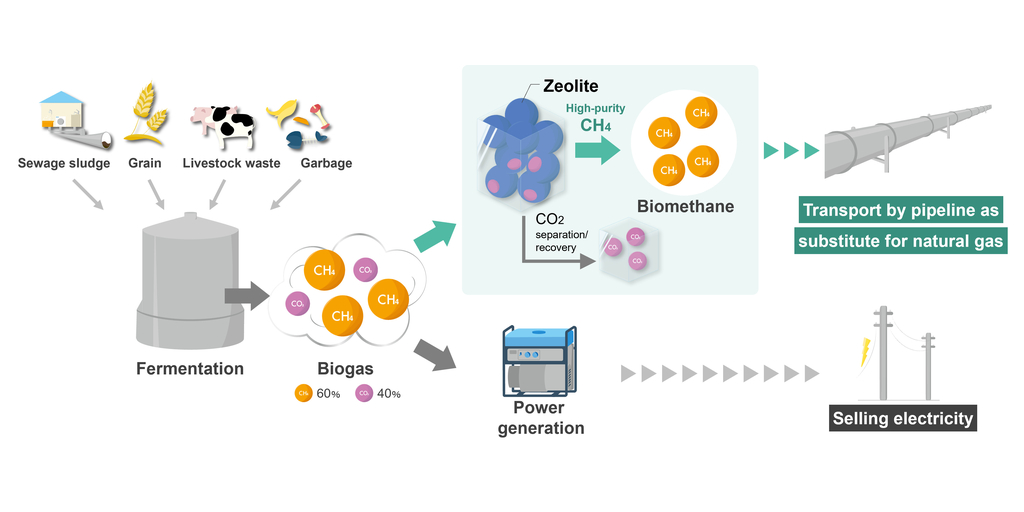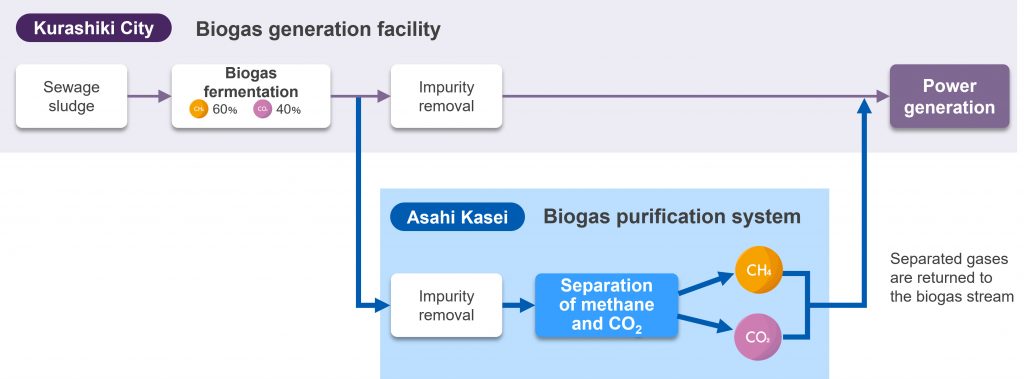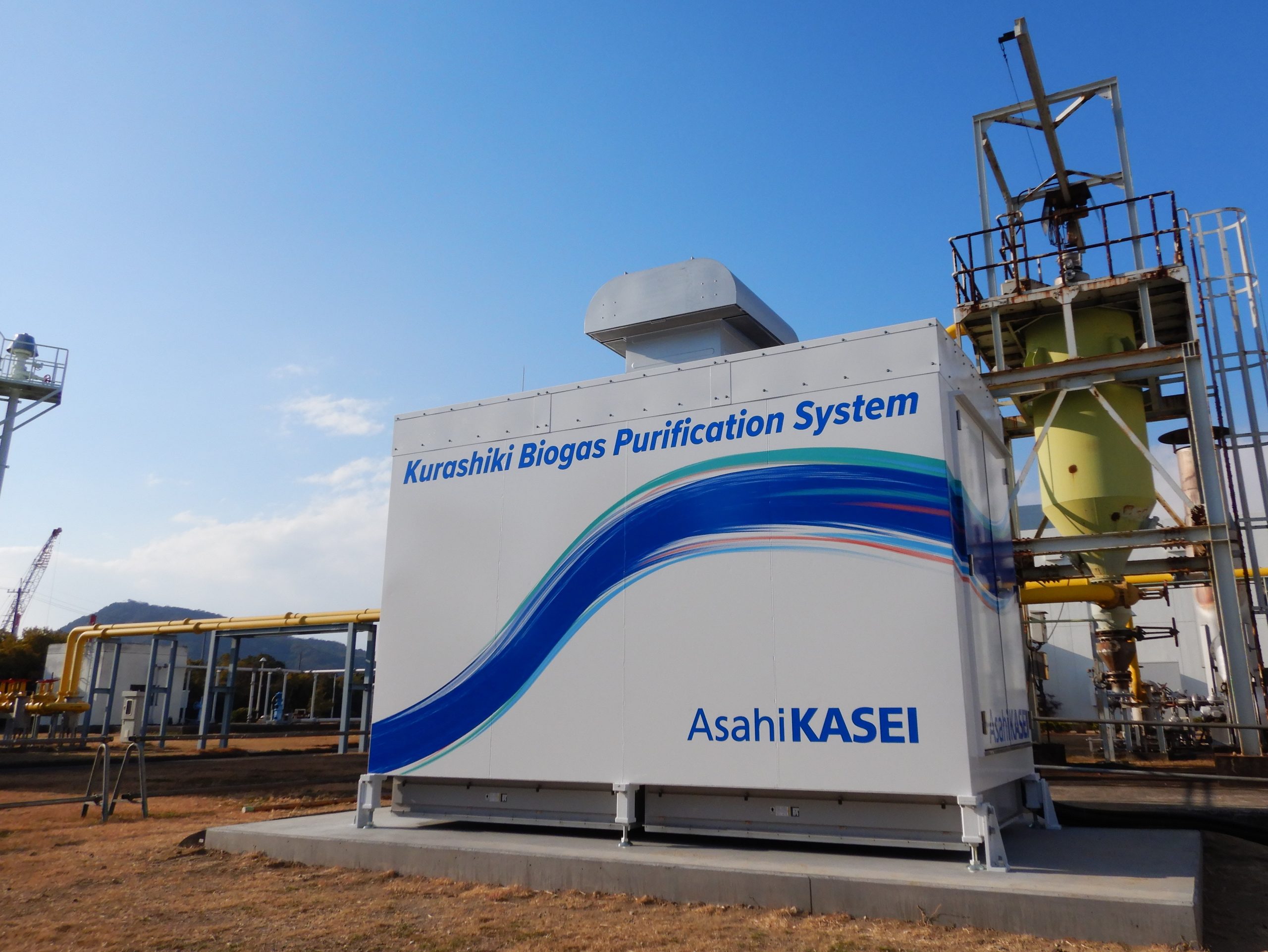Asahi Kasei Launches Biogas Purification System at Sewage Treatment Plant in Japan
On-site demonstration trial on CO2 separation/recovery utilising zeolites.
Asahi Kasei and Kurashiki City held a grand opening ceremony recently for a biogas purification system in Kurashiki, Okayama Prefecture, Japan. The system uses Asahi Kasei’s CO2 separation/recovery technology utilising zeolites installed at a sewage treatment plant. The goal of this collaboration is to evaluate and demonstrate the performance of the system.
Asahi Kasei and Kurashiki City concluded a comprehensive partnership agreement for the realisation of carbon neutrality in society on 15 September 2022. Advancing the demonstration trial for decarbonisation is one of the provisions of the partnership.

The system separates CO2 and methane from biogas using the optimum combination of a special zeolite as adsorbent that selectively absorbs CO2 and a special pressure vacuum swing adsorption (PVSA) process technology. The zeolite is a crystalline aluminosilicate having regular channels (pores) controlled on the order of angstroms (ten-millionths of a millimetre) and cavities (voids) with a specific surface area exceeding several hundred square metres per gram. Asahi Kasei’s PVSA process technology, which separates specific gases by changes in pressure, enables the removal of CO2 from biogas to refine high-purity methane gas (biomethane) at a high recovery rate.
Biogas from sewage sludge, garbage, etc., consists of approximately 60% methane and 40% CO2. While the use of biogas as a carbon-neutral fuel is rapidly expanding, it is also a source of biomethane as a substitute for natural gas in Europe, the U.S., and other regions.1

In Kurashiki City, electricity is generated using biogas derived from sewage sludge at the Kojima Sewage Treatment Plant. The system will use a portion of this biogas for the demonstration trial. Furthermore, if the CO2 separated by this system is utilised and/or stored, it would achieve carbon capture, utilisation and storage (CCUS), which is carbon negative. In the demonstration trial, the separated methane is returned and used as fuel to generate electricity for effective utilisation of the biogas.

The demonstration trial at the Kojima Sewage Treatment Plant began in February 2025. Asahi Kasei is responsible for the design, installation and operation of the system, as well as evaluating and demonstrating its performance, while Kurashiki City supplies biogas generated from sewage sludge in addition to providing the site for the trial.
Commercialisation of the system is expected around 2027 following additional trials in countries or regions where biogas purification is performed.
We are excited to start the on-site demonstration trial of a biogas purification system using Asahi Kasei’s zeolite and PVSA process technology. As the next step, by expanding co-creation partnerships globally, we will accelerate the advancement and practical implementation of this outstanding technology that can reduce environmental impacts, contributing to sustainability for the world.
Osamu Matsuzaki, Senior Executive Officer of Asahi Kasei and Senior General Manager of Corporate Research & Development
- International Energy Agency | Special section: Biogas and biomethane
https://www.iea.org/reports/renewables-2023/special-section-biogas-and-biomethane
European Commission | Biomethane
https://energy.ec.europa.eu/topics/renewable-energy/bioenergy/biomethane_en ↩︎

